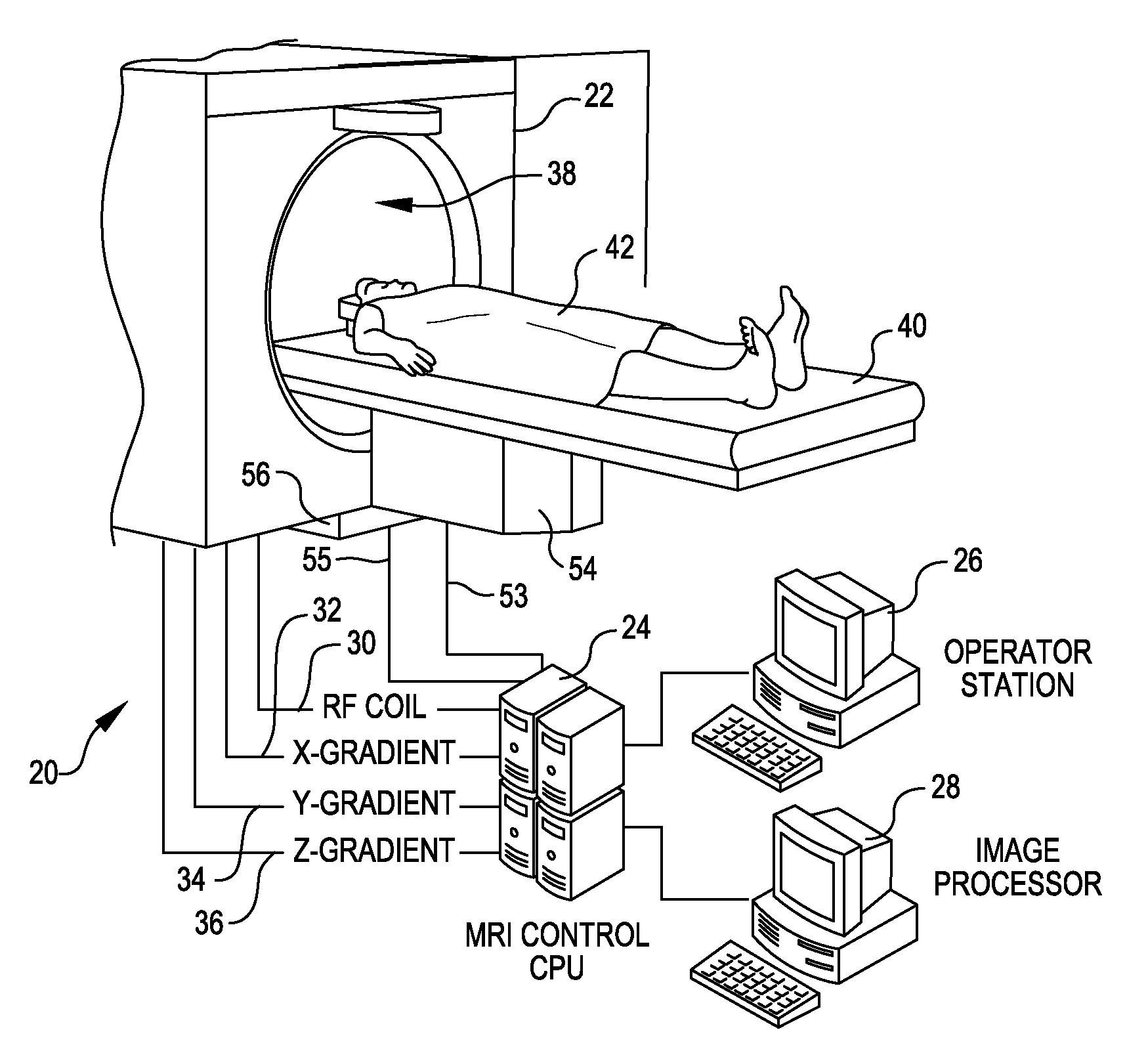Tool for accurate quantification in molecular MRI
a molecular mri and quantification tool technology, applied in the field of image data analysis, can solve the problems of visualizing contrast agents, reducing search time, and limiting the susceptibility image reconstruction, so as to promote sparsity, reduce search time, and constrain the effect of image reconstruction
- Summary
- Abstract
- Description
- Claims
- Application Information
AI Technical Summary
Benefits of technology
Problems solved by technology
Method used
Image
Examples
experiment 1
[0535]D. Experiment 1
[0536]In vitro SPIO targeting cell MRI. Cells from each cell line can be harvested, incubated and treated with the Herceptin-SPIO conjugate for 30 min. Washed cells will be fixed in 2% paraformaldehyde and embedded in agarose gel in 50 mL conical centrifuge tubes. MRI on these cell tubes and cells treated with control (no Herceptin) will be performed. The quantitative susceptibility imaging method can be used to determine susceptibility values, which can be converted to iron concentration and mass. In addition to the gradient echo imaging, standard T1 and T2 spin echo imaging can also be performed. By comparing with control, Δ(1 / T1), Δ(1 / T2) and Δ(1 / T2*) can be estimated. Inductively coupled plasma mass spectroscopy (ICP-MS, Plasmaquad) can be used to as a reference measure for iron concentration in the cell phantom. MRI measured [Fe], Δ(1 / T1), Δ(1 / T2) and Δ(1 / T2*) can be correlated with ICP-MS measured [Fe] and HER2 / neu expression to identify a quantitative and...
experiment 2
[0537]E. Experiment 2
[0538]In vivo SPIO targeting cell MRI in a mouse model. The in vitro cellular studies above can be extended to in vivo murine studies (n=11, t-test) using the human breast tumor cell line AU-565. These cancerous cells can be injected into the proximal femur regions of a BALB / c nude mouse. When the xenograph reaches 50 mg (estimated visually and by MRI volume), SPIO-Herceptin conjugates (200 μl) can be intravenously injected into the nude mouse (dosage of 20 mg / kg). High resolution (50 μm) MRI focused on the tumor can be performed pre-injection, 1 h and 2 h post-injection. SPIO with nonspecific antibody (no Herceptin) can be used as negative controls (n=11, t-test). MRI include the gradient echo imaging described herein and the standard T1 and T2 weighted spin echo imaging of the tumor. At the completion of MRI, mice can be euthanized for histochemistry analysis. Prussian blue colorimetric determination (Raynal, I, Invest Radiol, 2004; 39:56-63)) can be used as a...
experiment 3
[0539]F. Experiment 3
[0540]Biodistribution study using MnMEIO-Herceptin radioactive labeled with 64Cu-DOTA and comparing MRI QSI with μPET. Conjugation of Herceptin antibody with DOTA involves the activation of a carboxyl group on DOTA with N-hydroxysulfosuccinimide (sulfo-NHS) ester and 1-ethyl-3[3-(dimethylamino)propyl]-carbodiimide (EDC) (Cai, W., Eur J. Nucl Med Mol Imaging, 2007; 34:850-858). Herceptin (10 mg) can be mixed with the NHS / EDC activated DOTA in an ammonium acetate buffer, pH 8-9 and can be incubated at 4° C. for 6-12 h, which produce a molar ratio of 2-3 DOTAs to antibody. Then, DOTA conjugated Herceptin can be purified by Sephadex G-25 column and can be conjugated to the SPIO as aforementioned. Radiolabeling of DOTA-Herceptin nanoparticles (1 mg) can be performed with [64Cu]copper chloride (3-5 mCi) in ammonium acetate buffer (pH 5-6) for 30 min at 40° C. The labeled nanoparticles can be purified using gel filtration.
[0541]When the xenograft in a mouse reaches 50 ...
PUM
 Login to View More
Login to View More Abstract
Description
Claims
Application Information
 Login to View More
Login to View More - R&D
- Intellectual Property
- Life Sciences
- Materials
- Tech Scout
- Unparalleled Data Quality
- Higher Quality Content
- 60% Fewer Hallucinations
Browse by: Latest US Patents, China's latest patents, Technical Efficacy Thesaurus, Application Domain, Technology Topic, Popular Technical Reports.
© 2025 PatSnap. All rights reserved.Legal|Privacy policy|Modern Slavery Act Transparency Statement|Sitemap|About US| Contact US: help@patsnap.com



